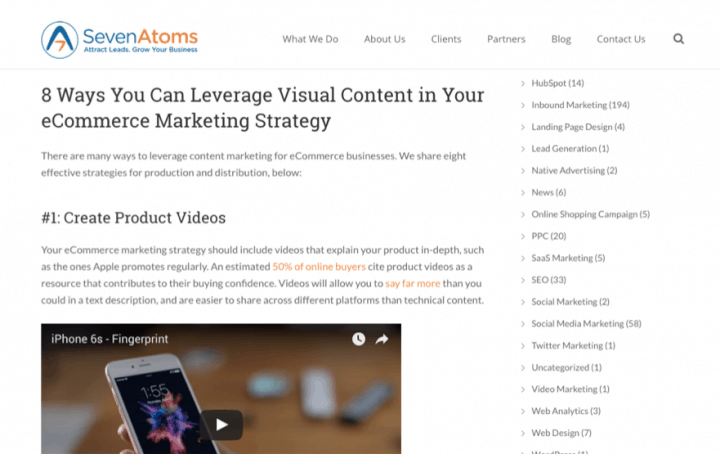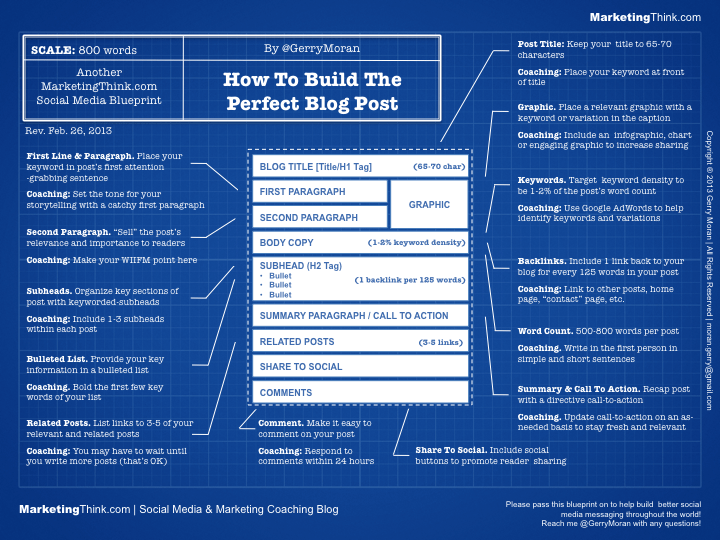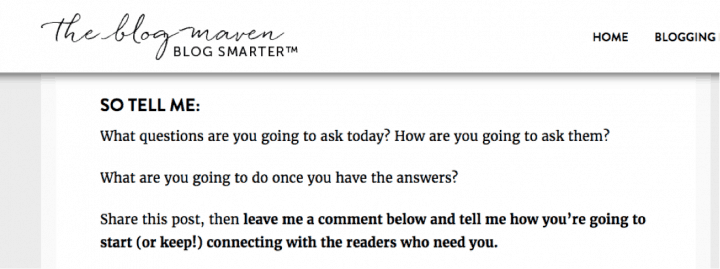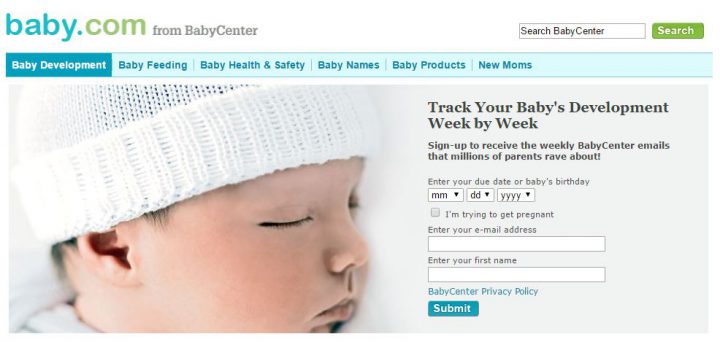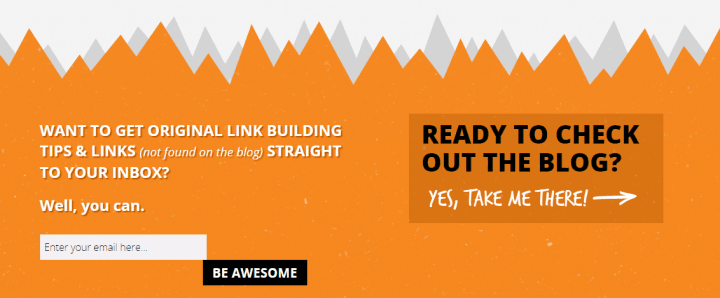Engagement is the buzzword on everyone’s lips these days.
Unfortunately, not everyone understands what engagement really means and just how to get it.
Much of inbound marketing relies on quantitative strategies and analyzing data.
Engagement is a tougher fish to fry.
Engagement is elusive because, while there are many techniques, there is no one standard recipe for success.
That said, while there aren’t any steadfast solutions, we can study patterns of success.
So What Exactly is Engagement?
If you're reading this, we can assume that you’re at least familiar with engagement.
But the purpose of this post is to debunk some common misconceptions and provide you with useful hacks to help elevate engagement.
Engagement is any form of interaction a user has with your content. The activity could be a social media “like,” a comment on your blog post, a link share, etc.
Before sharing your content, identify your goals.
Why have you created this content? What do you want people to do with it?
Answering these questions will help you decide what type of content you should release.
For example, if your target audience is music-loving millennials, an interactive video about some famous musicians might do better than a data-driven infographic or article.
Or, a retirement community might enjoy a series of well-written blog posts describing the benefits of their community and other subject matter that is relevant to the interests of their target demographic.
Let’s Break it Down: Strategies for Content Engagement
Now that we’ve gone over the basics let’s get into the heart of increasing engagement. These strategies will assist you in increasing social sharing, readability, user comments, and conversions.
1. Structure is Paramount
When you visit someone else’s blog, what do you notice first?
The content with good logical and physical structure draws us in.
For example, reading a blog post filled with dense blocks of text may seem overwhelming.
You can increase readability with bullet points, subheadings, graphics, numbered lists and bolded quotes.
Additionally, scattered or irrelevant content can deter your readers. Drafting an outline will help ensure your content follows a linear structure of thought.
For example, SevenAtoms has a clear and structured site. They've broken up content into numbered points. Also, the highlighted links and video content help to engage the reader as well.
It's equally important to structure individual posts well for better engagement. Here's a guide by MarketingThink on how to build the perfect blog post:
As Gerry Moran, the author of the blueprint, puts it: “Writing the perfect blog post is like building a house. With a mix of strong materials and a good blueprint to guide, you can create the rich space to host a growing collection of returning visitors.”
2. Pose a Question
One of the fundamentals of critical thinking is to ask and answer questions. By applying this to your content, you will have people pondering and discussing it even after they’ve left the page.
A thoughtful question at the end of a post could prompt a reader to leave their response in the comment section. They might even ask the same question to a friend over social media.
The Blog Maven is a highly engaging blog that always asks their readers' opinion. The blog teaches people how to establish a new blog, grow their readership, and make money by doing so.
At the end of the post, this blogger asks several questions to their readers and even asks them to share the post.
3. Add a Bit of Controversy
While this idea is one of the fun ones, it’s not a necessity. But, adding a controversial idea or question can be a great motivator for engagement.
Although sometimes these user discussions can get pretty heated… You may need an editor to step in and moderate the comments section.
That said, it’s hardly a bad thing to have your content discussed with passion. It’s like winning the engagement lottery!
In 2013, author Seth Adam Smith’s blog went viral after he posted an article titled “Marriage Isn’t For You.” The article received over 30 million views! It was also translated into over twenty languages and landed him three book deals.
Being as it was written by a married man, this post’s title alone conjured a lot of controversy and engagement.
4. Establish Brand Trust
Brand trust is one of the most important elements of engagement.
Remember, people buy from who they like. If you want to have customers come back, you'll need to prove to them that you are trustworthy.
Nobody wants branded and salesy content. To get engagement, your content needs to be high quality and selfless. It should either help solve your customer’s problems or inspire them.
One good example is baby.com. A site devoted to parenting and childhood issues. The publisher and sponsor of this site is Johnson & Johnson. But the brand’s name or products are not advertised on the site at all.
J&J's “modesty” has allowed baby.com to become a trusted source of information for new moms all around the world. In return, the loyal community of engaged mothers helps the brand stay up-to-date with their needs and wants.
Brand trust and engagement also requires familiarity. You can achieve familiarity by putting your brand in the face of target consumers. You want people to begin noticing your brand because they’ve seen it before.
The following will help you increase brand familiarity and trust:
- Post content on other sites
- Join conversations about your industry
- Share content from similar but non-competing brands
- Develop a presence both online and offline
5. Consider a Face for Your Brand
Consumers tend to respond better to companies and products that put a face to the name. They like to have someone or something they can associate with the brand.
Remember the “Smell like a man” campaigns from Old Spice? The Old Spice guy, portrayed by Isaiah Mustafa, became a quick sensation.
Of course, the face of your brand doesn’t have to be an actor or comedian. For instance, have the CEO contribute to your blog, especially when it comes to inbound marketing. Or, you could produce a podcast with a charismatic team member.
Again, this goes back to increasing brand trust. The more familiar people feel with your company, the more they’ll associate with it.
If you have limited resources, you can generate a similar effect with a unique brand voice. For all the content that you create, make sure that the voice is specific to your brand. Your brand’s voice establishes trust, familiarity, and it demonstrates your brand’s essence.
6. Try Interactive Content
Interactive content is a great way to foster engagement.
For example, a video where the visitor gets to click different options on the screen. Or, a reveal-based image where you click something to reveal hidden information. Even a simple poll is interactive content.
Using these tools tempts the visitor to engage. It also makes your visitors feel involved with your content, which motivates them to share it.
According to Kissmetrics, e-commerce store Country Outfitter has multiplied traffic to its site and engagement thanks to publishing fun quizzes on their lifestyle website. The quizzes have appeared on more than 100 different domains.
As stated by Hubspot, interactive content can increase your leads by a whopping 47%.
7. Don’t Skip the Conclusion
This one may seem obvious. But, there’s a lot of content out there that just drops off and leaves readers spinning in the wind.
The conclusion, while some may view it as a chore, is one of the most essential components of good content. It’s your final chance to solidify the ideas you’ve been pitching to the reader all along. You need to make sure there’s a lasting impression.
The conclusion that reiterates the points of the content will increase the chances of shares, comments, or “likes” on your content.
Your conclusion should wrap up the body of your content in a concise and clear manner.
Above all, it should encourage the reader to take some action.
For example, this could be a good place to insert a CTA link within the text, or even pose a question to the reader.
One good example of a creative CTA is from a link building blog Point Blank SEO. The call to action to join their newsletter is upbeat and clearly, communicates the benefit to the customer.
Check out also more unusual interactive calls to action by Content Marketing Institute to boost engagement.
Conclusion
While engagement is a large piece of the marketing puzzle, it’s not the only piece. You should focus on other key elements of inbound marketing as well.
wAnd always measure any and all engagement to determine the best methods for your brand. The latter may be tricky, but it is doable.
That said, increasing your engagement is still a necessary and beneficial practice. While it may take some trial and error, the energy you invest is worthwhile.
What are some of your favorite engagement strategies? Share your thoughts with us in the comments section.

